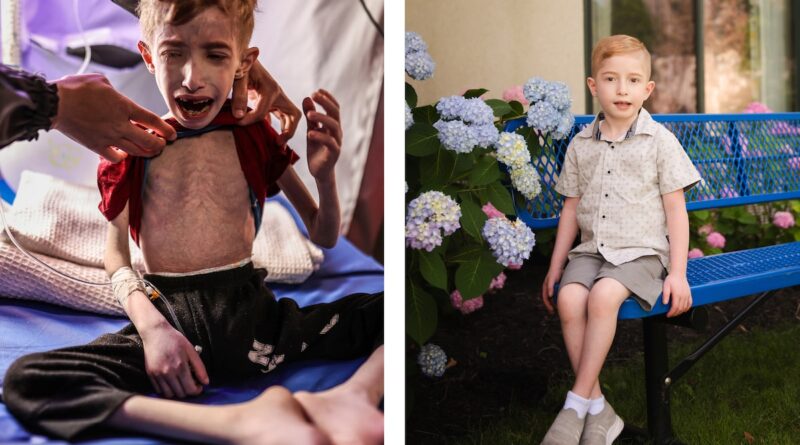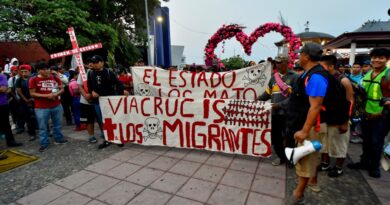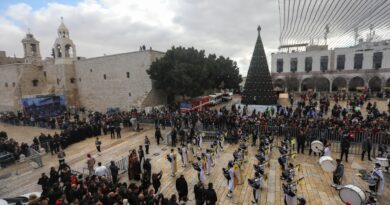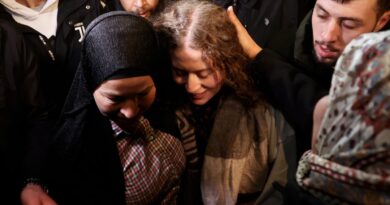Images of a starving Palestinian boy went viral. The attention saved him.
Just 4½ months ago, isolated in a barely functioning hospital in northern Gaza, 6-year-old Fadi al-Zant was at death’s door.
The medication he needed to treat his cystic fibrosis was nowhere to be found. He was also starving. As videos of Fadi spread around the world, he briefly became the face of Gaza’s hunger crisis. Then attention moved on.
The war in Gaza has displaced more than 1.9 million people, according to the United Nations. Aid shipments plummeted amid Israeli restrictions, leaving hundreds of thousands hungry, including Fadi, who rapidly declined as his family was forced to move from place to place in search of safety.
Fadi’s condition requires that he consume up to twice the amount of calories of other children his age. It also requires specific medication: an enzyme that helps people like Fadi get nutrients from food. Without either, Fadi began to waste away, his 31-year-old mother, Shaima, said.
She knew her son needed a doctor, but there were none nearby that could help. In March, she scooped up Fadi into her arms and walked toward the only hospital she hoped could treat him, she said.
Two hours later, she found a man with a donkey and cart who took them to northern Gaza’s Kamal Adwan Hospital. But even at the hospital, without the needed supplies, there was little doctors could do to help Fadi.
Gaza-based journalists Osama Abo Rabee and Hossam Shabat visited the hospital to document the deteriorating conditions facing sick children. Fadi stood out as one of the most critical. The journalists then posted their videos on Instagram.
Getting Fadi out was a nearly impossible task. The north was the focus of Israel’s initial operations against Hamas after the militant group attacked Israeli communities on Oct. 7. Roads were destroyed. Aid workers feared they would join the dozens of their colleagues already killed if they ventured into that part of Gaza.
Hailat said he coordinated with PCRF workers on the ground and secured an ambulance from the World Health Organization, which communicated with the Israeli government to get access to northern Gaza. He also began contacting hospitals in the United States.
Fadi’s weight kept dropping.
At first, health workers said they could only take Fadi and Shaima. But that would mean leaving behind his twin brother Hamdan, sister Samar and father, Ahmad.
“I sat on the floor and cried until they agreed to take my other kids with me,” Shaima said. “But they didn’t agree to take my husband.”
“It meant he would get good doctors,” Shaima said. But it also meant more farewells, this time to her children and sister, who would take care of Fadi’s siblings in Egypt.
Fadi became one of eight Palestinian children evacuated by PCRF since Oct. 7 who have received or are currently receiving medical care in the United States.
Since Oct. 7, more than 13,500 requests to leave Gaza for treatment abroad have been submitted, according to the WHO, which supports most medical evacuations out of the enclave. The organization said more than 4,900 patients have been evacuated.
But Israel’s offensive in southern Gaza has hampered evacuations. Since May 7, just 23 patients have been taken out of the enclave, according to the WHO.




